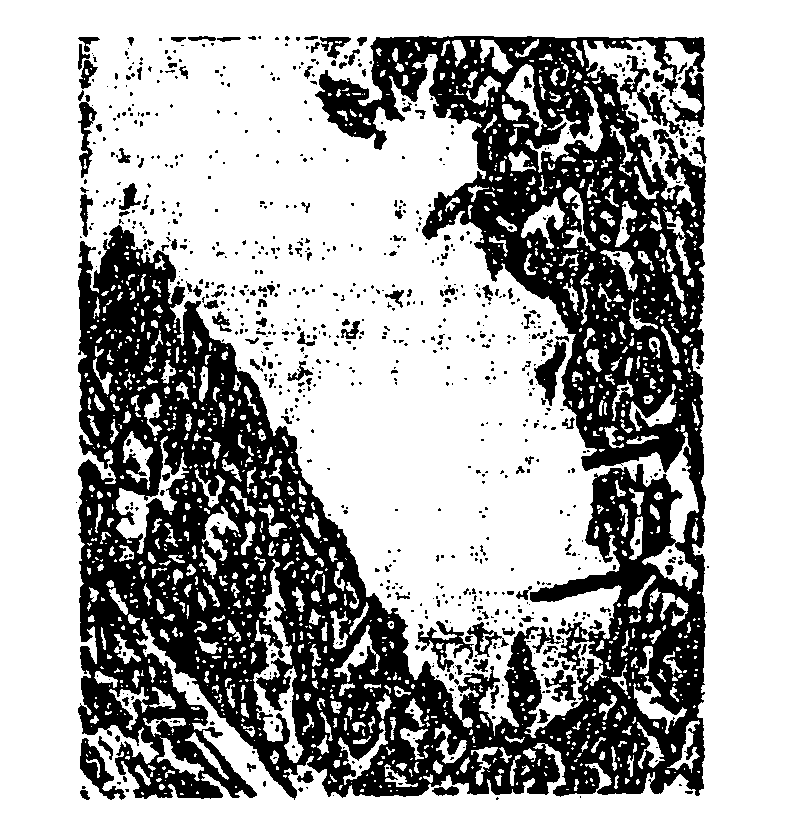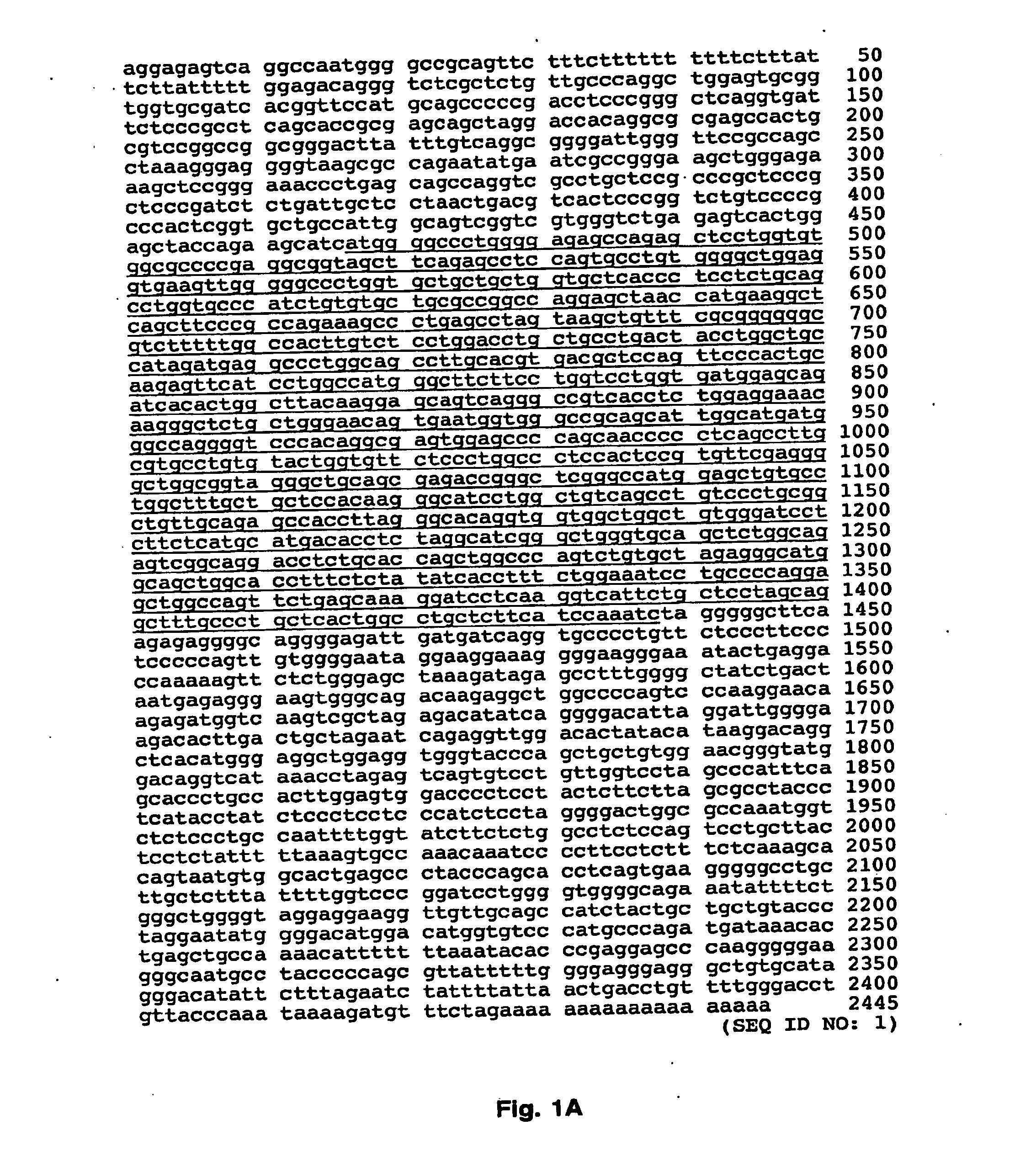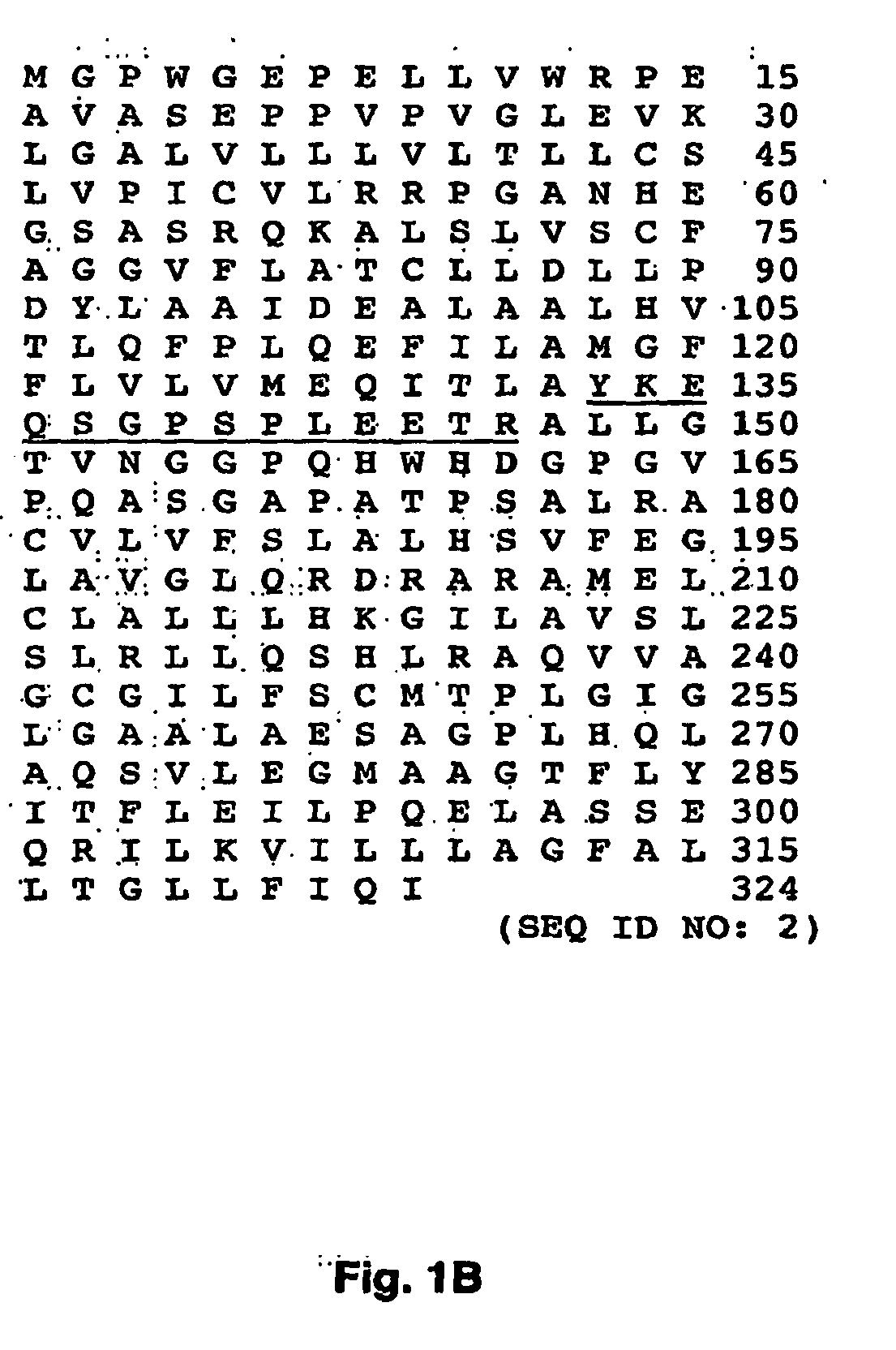Human Zip1, Zinc and Citrate for Prostate Cancer Screening
a technology of zinc citrate and prostate cancer, applied in the field of medicine and oncology, can solve the problems of 60% loss of atp production, low efficiency of zinc citrate-producing cells, and low bioenergetic cost, and achieve the effect of increasing the amount of zin
- Summary
- Abstract
- Description
- Claims
- Application Information
AI Technical Summary
Problems solved by technology
Method used
Image
Examples
example 1
[0061]Expressed prostatic fluid is obtained during a digital rectal examination of the prostate. The rectal examination is done in the standard fashion. It is common for expressed prostate fluid to come out of the urethra during these exams and it can be collected on a slide, a small piece of paper or in a small vial. In some instances, extra palpation of the prostate is required to obtain secretions and in some cases, the patient needs to be instructed to relax his external sphincter and pelvic muscles to obtain fluid. One can generally obtain 0.25-1.5 ml of prostatic fluid during a typical digital rectal examination. The fluid sample can be refrigerated, frozen or processed according to the needs of the study.
[0062]Prostate biopsies are typically done through a transrectal approach using ultrasonic guidance. An ultrasound probe is placed transrectally, which enables the urologist to obtain both longitudinal and transverse images of the prostate. The advantage of a...
example 2
Immunohistochemistry of Human Prostate Tissue
[0064]Paraffin mounted serial sections of human prostate tissue was used for hZIP1 immunohistochemistry staining. Hematoxylin and eosin staining was used for identification of normal and adenocarcinomatous glands. The slides were dewaxed by incubation in xylene and then rehydrated. Non-specific binding of antibody was blocked by incubation in BLOKHEN (Ayes Labs, Inc) solution. The slides were washed with PBS, incubated in hZIP1 antibody solution, washed again, incubated with fluorescein-labeled secondary antibody solution, and then washed and mounted with anti-fade fluorescent medium (Molecular Probes). For control staining, adjacent serial sections were stained as described herein, except the antibody-depleted and preimmune preparation were used instead of anti-hZIP1 antibody.
[0065]FIGS. 2A-2B show the membrane-associated immunohistochemical identification of hZIP1 in normal peripheral zone glandular epithelium. FIGS. 2C-2D show that hZI...
example 3
Immunocytochemistry of Prostate Cells
[0066]PC-3 and LNCaP cells were placed on cover slips. The cover slips were washed with PBS and the cells were fixed in paraformaldehyde solution. The cells were permeabilized by incubation in 0.2% NP-40 solution, were washed in PBS and were stained by the procedure described in Example 2.
[0067]FIGS. 2E-2F illustrate the presence of ZIP1 in malignant prostate cell lines PC-3 and LNCaP, respectively. The retention of ZIP1 gene expression in these malignant cell lines demonstrates that the absence of ZIP1 expression in the malignant glands in situ is not due to the deletion or fatal mutation of the gene. These results strongly implicate that epigenetic silencing of hZIP1 gene expression in the primary site malignant cells occurs in the in situ environmental conditions of the malignant prostate gland.
PUM
| Property | Measurement | Unit |
|---|---|---|
| wet weight | aaaaa | aaaaa |
| wet weight | aaaaa | aaaaa |
| volume | aaaaa | aaaaa |
Abstract
Description
Claims
Application Information
 Login to View More
Login to View More - R&D
- Intellectual Property
- Life Sciences
- Materials
- Tech Scout
- Unparalleled Data Quality
- Higher Quality Content
- 60% Fewer Hallucinations
Browse by: Latest US Patents, China's latest patents, Technical Efficacy Thesaurus, Application Domain, Technology Topic, Popular Technical Reports.
© 2025 PatSnap. All rights reserved.Legal|Privacy policy|Modern Slavery Act Transparency Statement|Sitemap|About US| Contact US: help@patsnap.com



